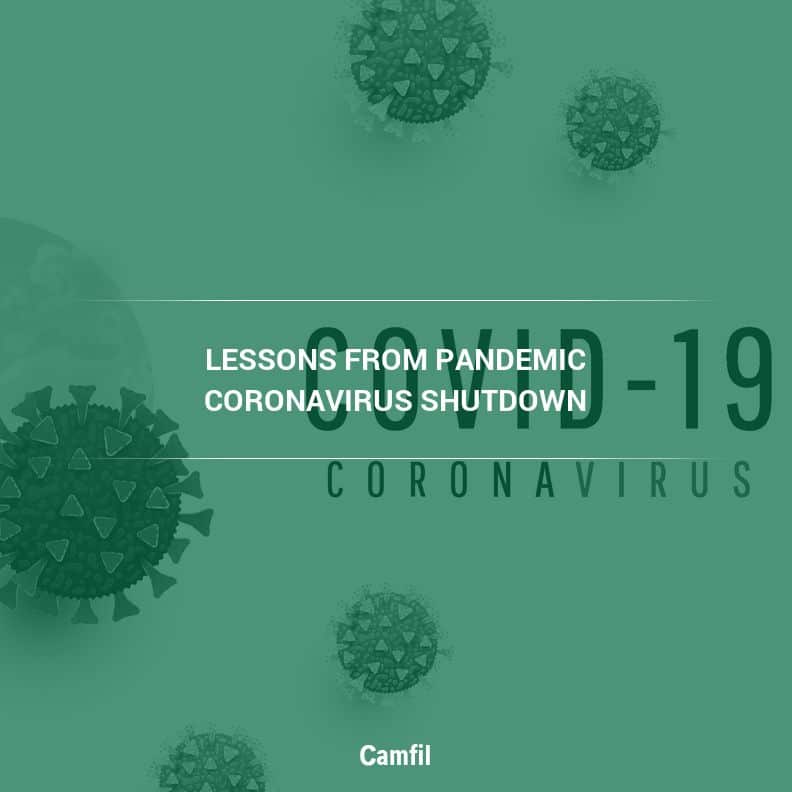In a time when people have too much on their minds to be worrying about air pollution, new data from certain parts of the United States indicate an unexpected benefit of the coronavirus lockdown: a steep and significant plunge in outdoor air pollution.
The findings come from researchers at Louisiana State University, where meteorologists were tracking pollution trends both locally in Louisiana and as far away as China. What they found was a nearly 60% reduction in nitrogen dioxide levels, one of the most harmful air pollutants facing human beings today.
While the downtrend is not likely to last, it is an effective reminder of how big a role human activity plays in outdoor pollution and why commercial air filtration systems will remain an essential part of the battle for improved IAQ.
How the Coronavirus Has Affected the Air Quality index Around the World
The researchers at LSU were using some of the very same tools used to determine the Air Quality Index (AQI), a global tool used to report daily air quality in different parts of the world.
Air quality experts agree that keeping track of an area’s AQI is an important part of protecting indoor air supply from the same pollutants.
“The truth is, no matter how good the HVAC system is, some portion of the indoor air supply will be from outside air, which makes AQI an important metric for anyone with a commercial building or facility,” Explains Mark Davidson, Manager of Marketing and Technical Materials at Camfil USA. “The relationship between outdoor air pollution and indoor air quality is more significant than most people realize.”
The Most Harmful Air Pollution Effects
Because the long-term health effects of air pollution can be highly damaging to human health, it is more important than ever to understand the consequences of poorly filtered air.
Respiratory diseases are one of the most common results of extended air pollution. While more serious conditions including lung cancer, heart disease, birth defects, and liver failure can occur, preexisting conditions can make an individual more susceptible to viruses like COVID-19.
Using Ultraviolet Light to Fight the Virus
As virologists are starting to learn more about the SARS-CoV-2 virus (the specific coronavirus that causes COVID-19), many commercial and industrial entities are adding supplemental technologies to well-established air filtration methods to protect their facilities. One of these includes UV-C which utilizes ultraviolet light to inhibit the virus from replicating.
“While it’s true the coronavirus, as well as many other microorganisms, may be killed or inactivated by the proper dose of UV-C, it does not magically remove them from the airstream,” says Davidson. “A certain amount of the organism remains even if dead, and once inhaled into the lungs, can create health issues like any other tiny inanimate object. Our lungs aren’t meant to house coral reefs built from the remains of microorganisms which is why high-efficiency air filters and in-room air purifiers are the primary defense against any airborne contaminant, living or dead.”
Q: Are There High-Efficiency Air Filters or In-Room Air Purifiers Suitable for Virus Control?
While a number of different commercial air purifiers have been sold as virus control systems, it’s critical to understand these systems are only as good as the air filters installed in them. If the systems advertise HEPA filters, they should be labeled to show each filter was individually tested to a minimum of 99.97% efficiency on 0.3 micron-sized particles. If less than HEPA filters are installed, the air filters should be labeled as having been tested using the ASHRAE 52.2 Standard with Appendix J and the filter’s minimum value should be MERV 15/MERV-A 15A or higher.
The CamCleaner from Camfil USA is one such system capable of holding either HEPA or MERV 15A air filters for larger, more open areas. A smaller system known as The City M is ideally suited for single rooms and contains a HEPA air filter as well as a molecular filter that helps control gaseous contaminants.
Why the Healthcare Industry is a Good Example to Follow.
One of the leading examples of effective air filtration can be found in the healthcare industry, where limiting the spread of airborne contaminants is essential to protecting vulnerable patients from pollution, bacteria, viruses, and other pathogens.
One of the best ways to emulate a medical-grade filtration system is by maintaining adequate airflow and pressure, two things that are directly determined by the layout of the system and the quality of the air filters themselves. Camfil USA is one of the leading designers of commercial filtration systems that can help keep a building’s occupants protected against the ongoing threat of air pollution.
Sources:
The post Lessons from Pandemic Lockdowns Pave the Way for Air Filtration Improvements appeared first on Air Filters for Clean Air.

